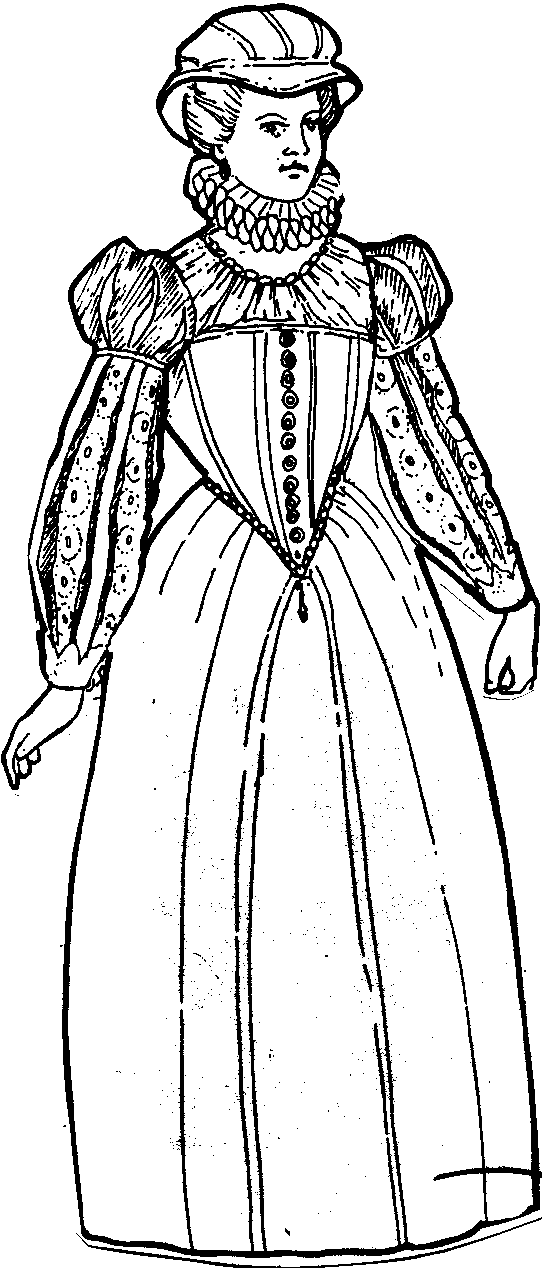ELIZABETHAN FASHION
A ‘highly fashion-conscious’ era as it is called ; of all the aspects, this Elizabethan culture was distinctively famous for its clothing - elaborate, stylish and striking. Both genders were seen wearing all the latest and the most fashionable outfits which weren't just limited to the upper class as the other ordinary people were too, highly influenced by them. Through paintings that hung in the great country houses, both men, along with women are portrayed in rich velvets, heavy brocades and exaggerated jewellery.
 |
| Fig: Men and women's clothing |
The Elizabethan women have been portrayed as well-to-do and their standard look included a white makeup base, colourful dyed cheeks, fake beauty spots, thin eyebrows, thick lipsticked lips and powdered hair which would be pinned and perfumed. Their clothing looked somewhat like men with broad shoulders, thin waists and broad hips. Their dresses were made up of two or three garments with the bodice coming down to the waist ; sleeves were separate but fastened to it with a lace. The skirt, known as the kirtle was of different material with a wire inside to give it a balloon shape. Hair was worn in many different styles - however they were always bushed from the forehead to the back.
 |
| Fig:The bodice came down to the waist |
It is said that putting on an Elizabethan outfit was quite a task - with so many layers of clothing it was thought that the woman would be warm and most likely, uncomfortable.
Men were seen as stylish wearing a shirt, fitted jacket , breeches and boots. For any social occasion for that matter, a ruff at the neck, velvet cloak and a hat would always work. Wealthy men were seen wearing fabrics like silk, brocade, satin and velvet that were colourful with mostly golden or silver lace. The poor on the other hand wore leather or canvas. The doublet was the most expensive as well as the most striking part of a mans clothing ; the sleeves were tight at the wrist ; hose covered the body from the waist down. Hats worn over the head were often of different shapes and sizes and were worn indoors. Hair unlike the women were combed forward to form short fringes . In the mid 16th century, trimmed beard and moustache came into style.
 |
| Fig: Parts of men's clothing |
No comments:
Post a Comment